There's nothing that can't be solved by one cup of coffee. If there is, have two.
For professional baristas, please follow the coffee workshop (Wechat official account cafe_style)

I'm addicted to coffee. Everyone around you knows that.
Dependence on coffee is both physical and psychological. Be sure to have a cup of coffee before one o'clock in the afternoon to work properly. It's not that I'm hypocritical. If you don't have a cup of coffee, you'll feel dizzy or dizzy, or you'll have a splitting headache. Only a cup of coffee can solve the problem at this time.
From the instant Nestle in childhood to the filter in the initial stage of work, then mocha pots and capsules, in order to make a cup of coffee shops comparable to the Gaggia coffee maker bought ruthlessly by Cappuccino, from chain coffee shops to addicted coffee shops, from casual drinking to caring about the origin and owner's methods.
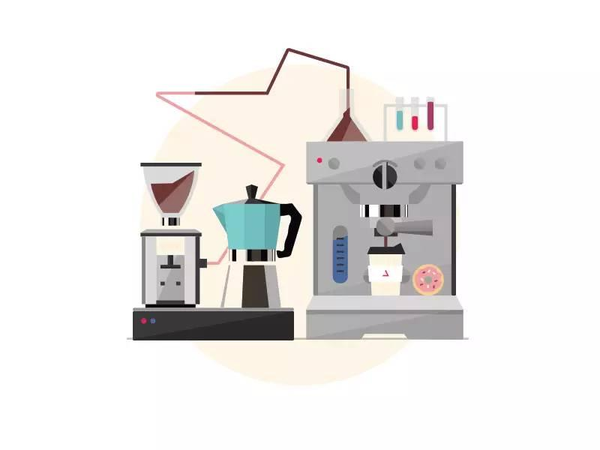
At the most exaggerated time, there are three coffee machines with different functions on the counter at home, and I can count the coffee beans baked from all kinds of places in the cabinet. The knowledge of coffee and the obsession with cafes have gradually accumulated over time and have become an indispensable part of life. I can write another article about my coffee journey.
Let's get back to business. Living in Europe, one of the things that makes me very comfortable is that drinking coffee is not a petty bourgeoisie, but a habit. From grandparents in their seventies to teenagers in high school, you can meet all kinds of people in cafes. Whether it is reading or working, chatting with friends, or packing up and taking away, I am as comfortable as I am drinking a cup of coffee.
In fact, the coffee habits of different countries in Europe are not exactly the same. This is something I can't experience when I first arrived in this land, and I've made a lot of jokes. So I thought of writing this series of "drinking coffee in Europe". Let me, an experienced coffee, rely on patients to set up a few for you to drink coffee in Europe, so that you don't have to worry about going to cafes from now on.
COFFEE BELT
The first thing to do is to break a myth. Europeans love coffee and have a strong coffee culture, but Europe is not native to coffee. Almost all the delicious coffee beans in the world come from this magical Coffee Belt zone. Let's call it "coffee pants belt" for a while.
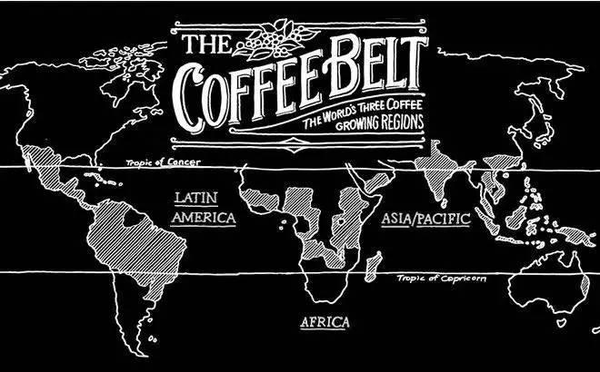
Almost all the countries of origin of coffee beans are on this belt of the earth, and the unique ecological climate provides the best natural conditions for the growth of coffee beans. I once joked that it would be exciting to plan a Coffee Belt Trip to go around the world along this belt.
But, you see, the whole of Europe is not on this belt. It is because of their love of this drink that they really carry forward this tropical drink without producing coffee.
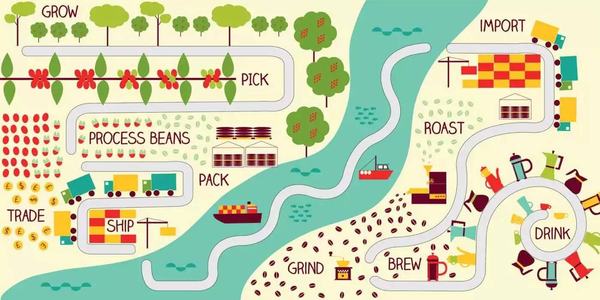
Although they do not grow coffee, Europeans focus on the steps after picking coffee beans, such as coffee roasting, coffee grinding and coffee making, taking the coffee-making process to the extreme. On the basis of Espresso, fancy coffee has developed various patterns in Europe and the world.

When it comes to drinking coffee in Europe, we have to mention that the hometown of Espresso espresso: Italy.
Drinking coffee in Italy
Espresso is a coffee drink that requires some skill and equipment to make. The original name means "express". Unfortunately, Espresso is sometimes translated as "espresso" in Chinese, which almost connects this way of making coffee with its hometown forever.
How comfortable it sounds to go to Italy for a cup of coffee, but my initial understanding of Italian coffee culture still seems to be a little wrong.
Drink standing up?
The first time I went to Italy was Landing Milan, and I saw an amazing scene in the cafe at the airport. We ordered coffee at the counter and sat down at the small table next to us, and then a wave of Italians came in. After ordering Caffe at the counter, one by one we stood at the counter and picked up the cup. One by one, the cup was concentrated and stuffed in.
The cup put down, said goodbye, turned and left. The whole process takes about two or three minutes. The next few waves of passengers came in in a similar situation, and we and another table of Americans became the only two sitting guests drinking coffee slowly.
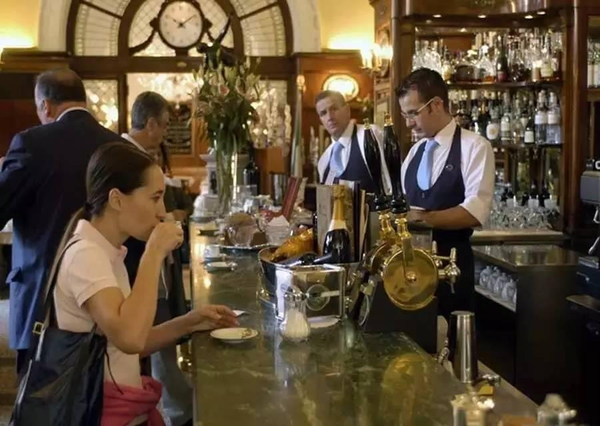
I was stunned. First, because of this concentration, it is hard to imagine the kind of hot and bitter; second, I have never seen such a coffee shop in which people stand and drink in turn. For example, this small cafe is like a smoking room. when people come in for a smoke, there is no need to keep more caffeine.
My doubts were finally answered later. Of course, Italy also has the normal coffee shop that we expect to be able to "stay", but such a "standing up" culture is really unique to Italy. After walking to a few cities, I often encounter the scene of coming to the counter for a drink and leaving. My surprise did not abate. Every time I saw it, I sat with my eyes wide open, slowly drinking a cup in my hand, because sometimes I had to charge more when I sat down.
How would you like it?
Drinking coffee in Italy is usually at Bar, which sells both coffee and alcohol. Say a polite hello to attract attention before ordering coffee. Whether sitting or standing, a Ciao is enough, and you can also say Grazie and Ciao when you leave.
If you want to experience "Drink coffee like an Italian", go to the counter, order a Caffe (Caffe means default to a Shot Espresso in an Italian cafe), then lean on the counter, drink up your coffee, and walk away.
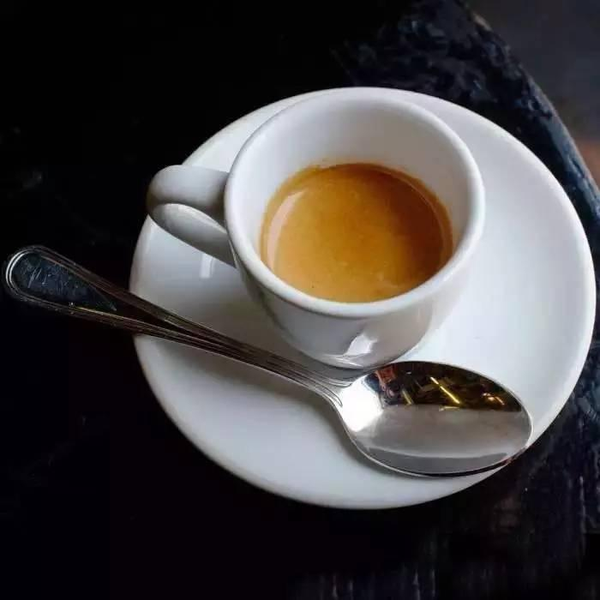
Isn't that enough? Just click on a Caff è doppio, which is the expresso of Double-shot. This undoubtedly takes courage. I am the kind of person who drinks coffee with milk and sugar. Although I have been persuaded many times before Espresso can taste the taste of real coffee, I use coffee as a drink, so I can enjoy it only when I mix it properly.

For example, the Cappuccino I love. This is interesting, too. Because Italians will find it strange to drink coffee with milk after the morning. Milk is what you only have for breakfast. If you go to a cafe in the afternoon or evening and order a Cappuccino, you may get some confused glances.
But if you like it, don't worry, whatever.
Another small trap to avoid is the latte. In most countries, if you go to a restaurant or cafe to order Latte, it will be clear to the other person that you want a latte. In Italy, Latte means milk, so if you only say a Latte, the other person may send you a glass of milk and leave you at a loss. If you want a latte, Caffe Latte is the right word.

I naturally fell on this stalk. Not for people, but for an office automatic coffee machine. I pressed the Latte button and came out with a cup of white milk. I thought the machine was out of coffee and couldn't laugh or cry. After my Italian friend explained it to me, I realized what had happened.
The overall feeling of drinking coffee in Italy is that there are more traditional cafes and fewer design cafes in modern style than in other countries. For example, Scandinavia is the gathering place for design cafes. In Italy, we can't find American and British coffee chains like Starbucks or Costa. It is this tradition and slightly lagging attitude that makes coffee so ecologically contagious in this country.
Have a cup of French coffee
Compared with the original ecology of Italy, French coffee culture is more all-inclusive. We have seen a lot of Parisians by the Seine sitting on the street rattan chairs drinking coffee, but they do not realize that it is only one side of French coffee.
I roughly divide French cafes into three types: story, design, and workspace.
Story coffee shop
It means a coffee shop with a story. I firmly believe that every caf é has a story to tell, but the story here refers to a coffee shop with a very long history, or celebrity anecdotes, or a coffee shop related to filming. In short, there is a story that makes you "wow" behind it.
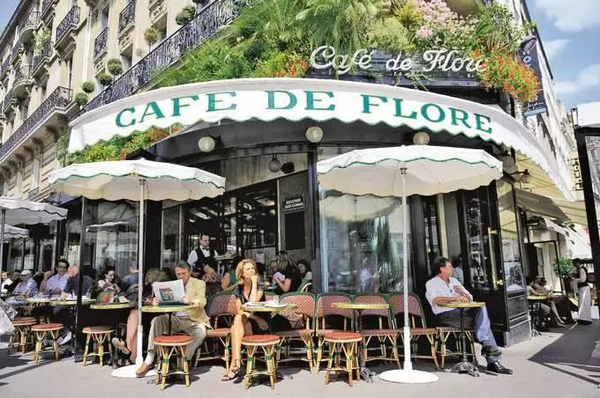
Especially in a spoiled city like Paris, it's not surprising to walk past a coffee shop visited by a celebrity. Such cafes are generally decorated with retro (maybe old-fashioned), or luxurious or classical, in short, maintaining a sense of passing through the old times.
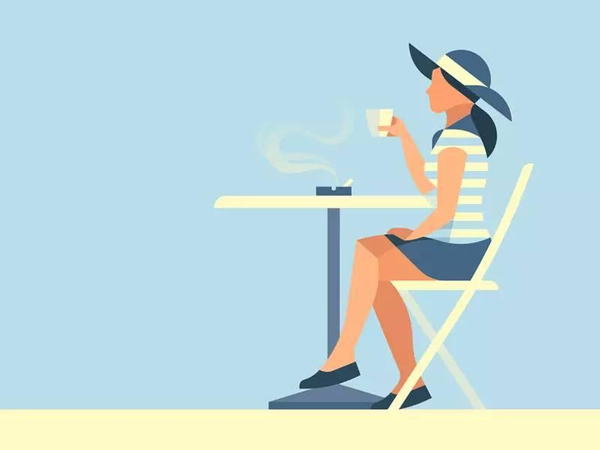
There are usually outdoor rattan chairs and small round tables that give you a sense of French retro. Like the famous Flower God Coffee by the Riverside, double Old Coffee, or the double windmill of Angel Emily. The story behind can make you "wow".
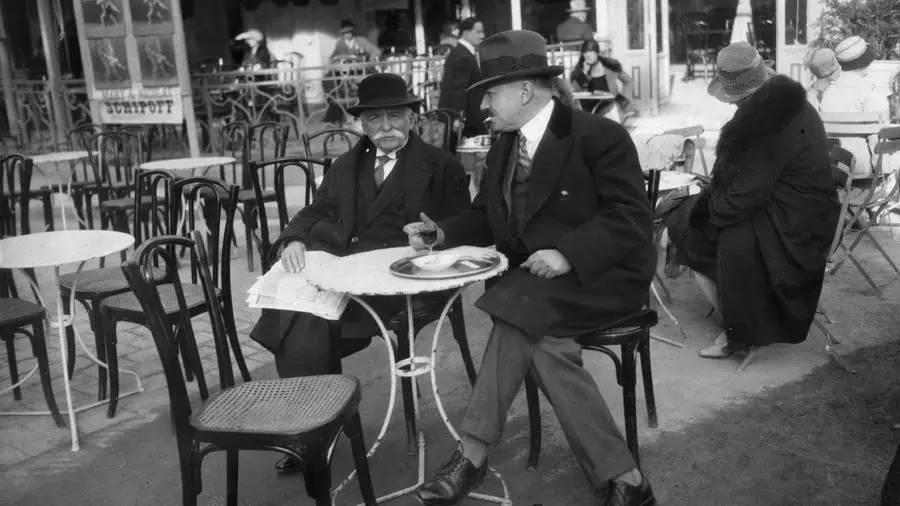
Going to such a cafe is for the story, so it is very helpful to read the relevant history and celebrity anecdotes in advance. Otherwise, you will spend a lot of money on a cup of coffee that is so popular for some reason. Yes, by the way, such places are often expensive, or a large part of the fee you pay for a cup of coffee is to buy a story, which may make you feel better.
As for the taste of coffee itself, you need to experience it by yourself, and your expectations need not be too high.
Design coffee
This is my personal favorite type of cafe.
The first feature of this type of cafe is that the shopkeeper will pay a lot of attention to the coffee itself. Perhaps there is a deep study of the origin of coffee; or it is accurate enough to make coffee in seconds; or even some coffee shops can bake coffee themselves, taking control of a good cup of coffee a step further. Almost guaranteed, you will have a good cup of coffee.
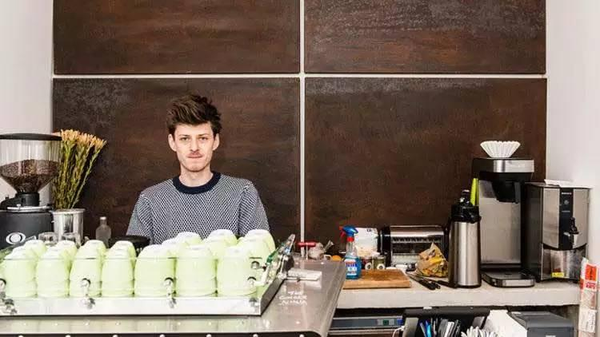
The second feature is that such coffee shops tend to have a clear design style. Everything from a menu, a decoration, to the words on the wall, a drinking cup, and even a bag to take away. So, such cafes are often impressive, or simple, or Hipster, or American retro, in addition to a good cup of coffee, there are always impressive design details.
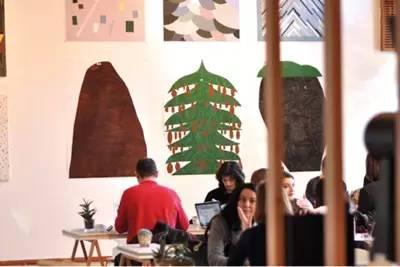
If you go to such a cafe, bring your own book, or spend a leisurely afternoon with friends. Eat some coffee shop snacks when you are hungry, and relax faster than you think.
WORKING CAFE
I often have the need to work on the road. Although you can go to any cafe and use WIFI to solve the problem, cafes as workspaces tend to greatly upgrade your work experience.
Generally speaking, such cafes are relatively spacious, with adequate power outlets and fast Internet access. And come here, the main purpose is only one, that is, work. It may not be appropriate to barge in and chat.
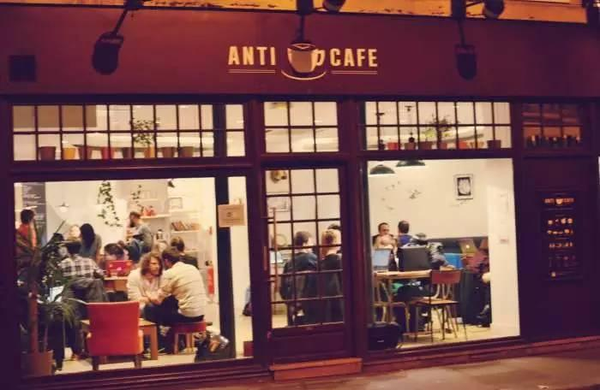
Because work is given priority to and coffee is secondary, the general charging method for such working cafe will be different. Maybe it's by the hour, maybe by the day, maybe it's just a minimum charge. So be sure to ask the charging method when entering the door, and then find a place to sit down.
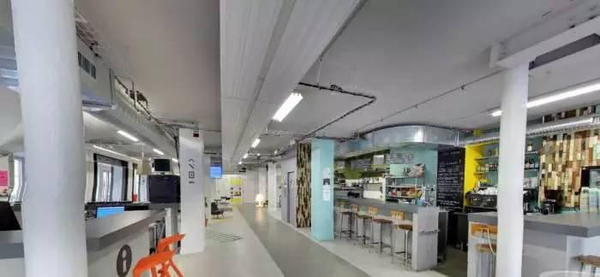
If you suddenly have a lot of work on the road, or just want to experience the way Digital Nomad works, this kind of working cafe is the most recommended.
Drinking coffee in France generally feels more leisurely and more in line with our imagination of cafes and coffee culture. In the city center, walk along the river and casually find a coffee shop around the corner. What awaits you may be a moving story, or it may be a day slaughtered as a tourist. :)
This is the first article in the series "drinking Coffee in Europe"
The next article in the series I will write in the cold Nordic and lazy Greece
How to drink coffee.
As for the coffee shop recommendation, I think it's another matter.
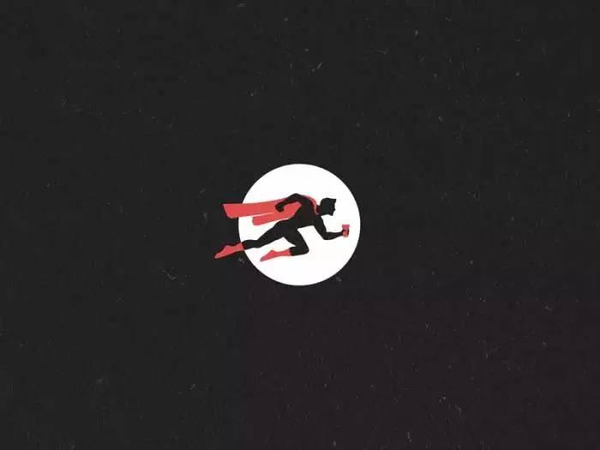
There is nothing can't be solved
With a cup of coffee, if not, drink two.
-Cathy
All the pictures and texts in this article belong to the official account "Cathy Rangers".
Official account: three meow vagrants
Travel culture is original from the media.
Facing the urban elite youth who think and travel independently
Enjoy quality, sentimental and interesting travel stories every week
Important Notice :
前街咖啡 FrontStreet Coffee has moved to new addredd:
FrontStreet Coffee Address: 315,Donghua East Road,GuangZhou
Tel:020 38364473
- Prev
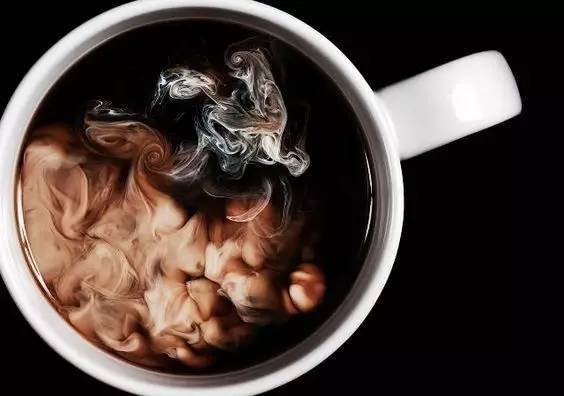
If you dry this cup of coffee, you are the expert!
Professional barista communication Please follow the coffee workshop (Wechat official account cafe_style) I don't know when to learn to drink coffee. Maybe after going to work, coffee has become a necessity on the desk. At first, I don't like it so much, because I feel very bitter. Even after adding milk, I still feel very astringent. I don't understand why so many people like to drink this.
- Next
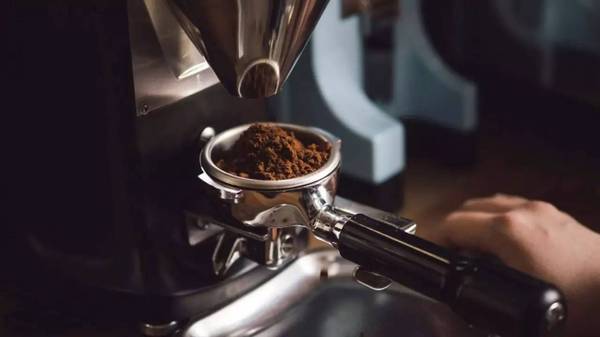
You ask me why I like to study in the coffee shop? Because it's very scientific!
"Hi! What are you doing? "" reading in the coffee shop
Related
- Beginners will see the "Coffee pull flower" guide!
- What is the difference between ice blog purified milk and ordinary milk coffee?
- Why is the Philippines the largest producer of crops in Liberia?
- For coffee extraction, should the fine powder be retained?
- How does extracted espresso fill pressed powder? How much strength does it take to press the powder?
- How to make jasmine cold extract coffee? Is the jasmine + latte good?
- Will this little toy really make the coffee taste better? How does Lily Drip affect coffee extraction?
- Will the action of slapping the filter cup also affect coffee extraction?
- What's the difference between powder-to-water ratio and powder-to-liquid ratio?
- What is the Ethiopian local species? What does it have to do with Heirloom native species?

